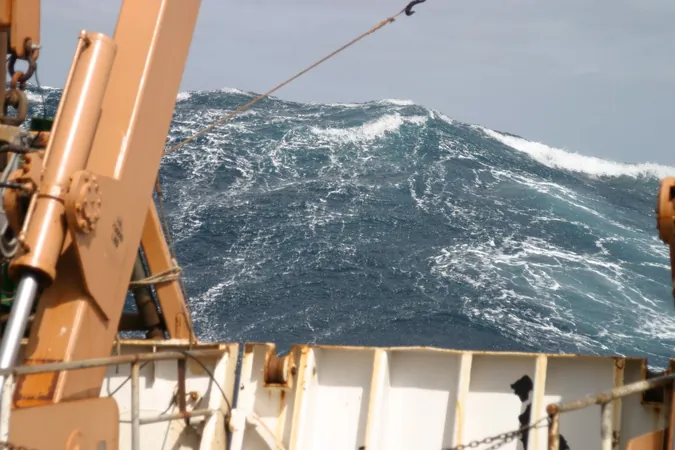
Brace Yourself: New Study Unveils Eye-Watering Heights of Rogue Ocean Waves!
2024-09-19
Introduction
The ocean's serene shoreline is often deceiving. Beneath its calm surface lies a world of unpredictable and monumental power. A groundbreaking study has revealed that rogue waves—those notorious behemoths of the sea—can reach astonishing heights, far beyond what scientists once estimated.
Significance of the Study
Understanding the formidable nature of waves in our planet's vast oceans is not merely an academic endeavor; it has significant implications for climate modeling and the safety of offshore structures like oil rigs and wind farms. As researchers continue to unravel the complexities behind wave formation and breaking patterns, new findings suggest that these monstrous waves could swell to heights four times greater than the tallest ever recorded.
The Research Team and Methodology
A team of engineers from the University of Manchester and the University of Oxford has made significant strides in this area. Their research, published in the esteemed journal Nature, challenges long-held perceptions of wave dynamics. Traditionally regarded as two-dimensional phenomena moving in a linear path, these engineers have proven that under certain conditions, ocean waves can interact in multiple dimensions, forming what they call "combo waves."
Experimental Setup
To investigate these dynamics further, the team utilized a specialized circular wave tank at the FloWave Ocean Energy Research Facility. This innovative setup allowed them to observe waves interacting without the constraints typically seen in the open ocean. With the help of a custom wave gauge array, they carefully analyzed wave behaviors as they began to break.
Historical Context
Their experiments drew upon historical data, particularly the infamous 1995 Draupner wave—an 84-foot tall rogue wave that marked the first confirmed instance of such an extraordinary event. By simulating conditions similar to those found in hurricanes—where fierce winds shift direction unpredictably—the researchers discovered that the intersection of waves increased their potential height.
Key Findings
"We demonstrate that in these complex directional conditions, waves can greatly exceed the previously acknowledged limits before breaking,” explained Sam Draycott, a senior lecturer involved in the study. Unlike single-direction waves, these multidirectional giants have the potential to double in size before they collapse.
Theoretical Implications
The findings get even more astonishing. The scientists concluded that waves could continue to grow even after breaking, theoretically allowing them to become four times steeper than any previously recorded. This means that the current record-holding rogue wave of 84 feet could, in a hypothetical scenario based on their research, reach a staggering height of up to 336 feet (about 102 meters)!
Cautionary Notes
“It’s important to clarify that our estimates are not definitive claims made in our study but rather extrapolations based on our findings,” Draycott cautioned.
Nuances of Wave Behavior
Ton van den Bremer, a researcher from Delft University of Technology in the Netherlands, emphasized the nuance behind this phenomenon. “Typically, when a conventional wave breaks, it forms a white cap and can't grow back. However, under specific conditions, when a highly spread wave breaks, it can continue to rise.
Future Research Directions
What remains uncertain is how precisely these findings translate into real-world scenarios. The research team acknowledged the need for future studies to factor in elements like water depth and the chaotic nature of actual ocean waves, which differ significantly from their controlled experimental conditions.
Conclusion
Given this new understanding of wave mechanics, the next time you're enjoying a day at the beach, remember: the ocean holds secrets far beyond our comprehension, and those gentle waves could harbor the potential for monstrous, towering surges lurking just out of sight. Stay safe out there, ocean explorers!


 Brasil (PT)
Brasil (PT)
 Canada (EN)
Canada (EN)
 Chile (ES)
Chile (ES)
 España (ES)
España (ES)
 France (FR)
France (FR)
 Hong Kong (EN)
Hong Kong (EN)
 Italia (IT)
Italia (IT)
 日本 (JA)
日本 (JA)
 Magyarország (HU)
Magyarország (HU)
 Norge (NO)
Norge (NO)
 Polska (PL)
Polska (PL)
 Schweiz (DE)
Schweiz (DE)
 Singapore (EN)
Singapore (EN)
 Sverige (SV)
Sverige (SV)
 Suomi (FI)
Suomi (FI)
 Türkiye (TR)
Türkiye (TR)